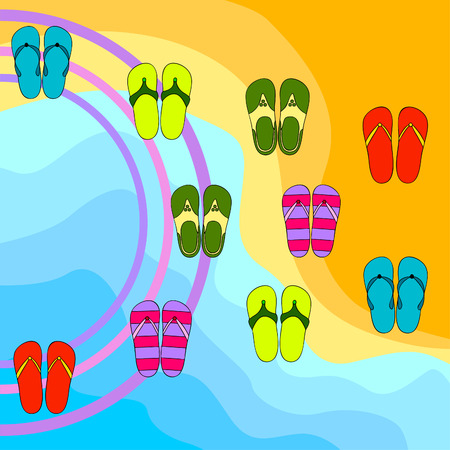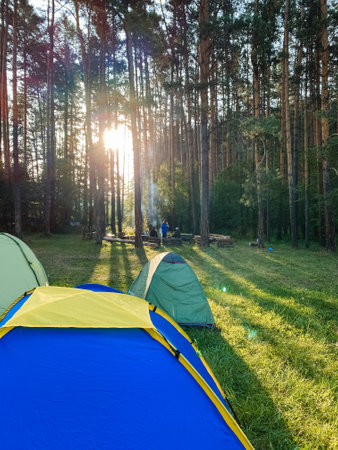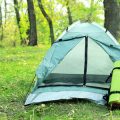1. Introduction to Tent Footprints and Ground Covers
Whether you’re camping in the Pacific Northwest’s lush forests, the rocky deserts of Arizona, or the sandy beaches of California, your tent needs a little extra help to handle American terrain. That’s where tent footprints and ground covers come in. These handy accessories are laid down beneath your tent, creating a barrier between your shelter and the sometimes harsh, unpredictable ground. But what exactly are they, and why do campers across the U.S. consider them essential gear?
What Are Tent Footprints and Ground Covers?
Tent footprints are custom-fitted sheets—usually made from tough, waterproof material—that match the shape of your tent floor. Ground covers, on the other hand, can be tarps or generic protective sheets that go under your tent but aren’t always a perfect fit. Both serve the same basic purpose: protecting your tent’s bottom from wear and tear, moisture, sharp rocks, mud, and other ground hazards.
Why Use Them?
American campsites can be unpredictable—think pine needles in Yosemite, red clay in Georgia, or gravel pads in national parks. Using a footprint or ground cover not only helps keep your tent dry and clean but also extends its life by shielding it from abrasive surfaces. This means you stay more comfortable inside, with less worry about leaks or cold seeping through the floor.
Quick Comparison: Tent Footprints vs. Ground Covers
| Feature | Tent Footprint | Ground Cover (Tarp) |
|---|---|---|
| Fit | Custom (matches tent size/shape) | Universal (may need folding/trimming) |
| Material | Lightweight & durable (often polyester or nylon) | Varies (polyethylene, canvas, etc.) |
| Packing Size | Packs small with tent gear | Can be bulky if oversized |
| Protection Level | Excellent for specific tents | Good general protection |
| Price Range | $20-$60 (brand-specific) | $5-$30 (generic options available) |
No matter where you pitch your tent in America—from backcountry sites to established campgrounds—a footprint or ground cover is one of those simple upgrades that makes every night outdoors more comfortable and keeps your gear ready for adventure after adventure.
2. Benefits of Using a Tent Footprint
Why Use a Tent Footprint?
A tent footprint is a protective layer that goes underneath your tent. Its designed to add extra durability and comfort, especially in the varied environments you’ll find across U.S. campgrounds—from rocky mountain sites to damp forest floors.
Protection from Abrasion
Campgrounds across the United States often have gravel pads, rough dirt, or roots sticking out of the ground. A tent footprint acts like a shield between your tent floor and these abrasive surfaces. This helps prevent tiny tears and wear spots from developing over time, making your tent last longer.
Guarding Against Moisture
Many campsites, especially in regions like the Pacific Northwest or along riverbanks, can get pretty wet. Even morning dew can soak through some tent floors. A footprint provides an extra waterproof barrier, keeping ground moisture from seeping up into your sleeping area and helping you stay dry and comfortable all night.
Defense Against Punctures
Pine needles, small rocks, and sticks are common at American campsites. These sharp objects can poke holes in your tent floor, but a footprint takes the hit first. It’s much easier—and cheaper—to replace a damaged footprint than to patch up your entire tent.
Common Benefits of Tent Footprints
| Benefit | How It Helps at U.S. Campgrounds |
|---|---|
| Abrasion Resistance | Protects against rough gravel and roots often found on U.S. tent pads |
| Moisture Protection | Keeps out rainwater and dew, especially in humid or rainy states |
| Puncture Prevention | Shields from sticks, stones, and pine needles common at wooded or rocky sites |
| Easier Cleanup | Catches dirt so you can shake it off before packing up—handy for muddy or dusty areas |
| Extended Tent Life | Lowers wear and tear so your tent lasts for many more adventures across the country |
Is a Tarp the Same as a Footprint?
While tarps can work in a pinch, footprints are made to fit your specific tent shape and size. This ensures full coverage without water pooling underneath—a common issue with oversized tarps on sloped campground sites.

3. Types of Ground Covers and Choosing the Right Material
Understanding Your Ground Cover Options
When it comes to protecting your tent floor and staying comfortable while camping, picking the right ground cover is key. In the U.S., campers often choose between several popular materials, each with their own benefits and drawbacks. Let’s break down the most common choices: Tyvek, poly (polyethylene), and custom-made options.
Common Ground Cover Materials
| Material | Pros | Cons | Best For |
|---|---|---|---|
| Tyvek | Lightweight, tough, waterproof, affordable, easy to pack | Noisy when moving around, not as soft underfoot, not always available in large sizes | Backpacking, solo camping, lightweight setups |
| Poly (Polyethylene Tarps) | Very durable, widely available at hardware stores, budget-friendly, waterproof, comes in multiple sizes | A bit heavier and bulkier than Tyvek, can collect water if not trimmed to fit under tent properly | Car camping, family tents, rough or rocky terrain |
| Custom Options (Canvas, Specialty Fabrics) | Can be made to fit exactly; canvas breathes better and is very strong; some specialty fabrics offer extra padding or insulation | Tends to be more expensive; canvas is heavy and bulky; custom orders may take time to receive | Long-term camping, comfort-focused setups, winter camping |
Tips for Picking the Best Material for American Terrains
- Desert Camping: Tyvek works well because it’s light and keeps sand out. Just stake it down on windy days!
- Rocky or Rough Ground: Go with a thicker poly tarp or even a padded custom option to protect against sharp rocks.
- Muddy or Wet Areas: Poly tarps are great here due to their excellent waterproofing. Make sure the tarp doesn’t stick out from under your tent to avoid rainwater pooling underneath.
- Forested Sites: Tyvek is easy to shake off when pine needles or leaves fall on it.
- Winter Camping: Consider insulated or double-layered custom covers for extra warmth and moisture protection.
Sizing Tips for Your Tent Footprint or Ground Cover
Your ground cover should match the shape of your tent but be slightly smaller than the tent floor itself. This keeps rainwater from running between the tarp and your tent during storms.
Caring for Your Ground Cover
No matter what you use, shake it out before packing up and let it dry fully at home. This helps prevent mold and keeps your gear lasting longer.
4. Setting Up: Best Practices for Comfort and Durability
Step-by-Step Guide to Laying Down a Tent Footprint or Ground Cover
Setting up your tent with a footprint or ground cover is one of the simplest ways to boost comfort and protect your gear on any American camping adventure. Here’s how you can do it like a pro:
Step 1: Pick the Perfect Spot
Look for level ground, clear of sharp rocks, sticks, and debris. Avoid low spots where water can pool if it rains. In American campgrounds, you’ll often find designated tent pads—use them whenever possible.
Step 2: Unfold Your Footprint or Ground Cover
Take out your tent footprint (the one designed for your specific tent) or use a heavy-duty tarp as an alternative. Lay it flat on your chosen spot, making sure it’s centered where you want your tent to sit.
Step 3: Size Matters
Your ground cover should be just slightly smaller than your tent’s floor. If it sticks out, rainwater can run between the cover and tent, leading to soggy floors. Tuck any extra material under the tent base.
| Ground Cover Type | Typical Material | Recommended Use |
|---|---|---|
| Tent Footprint | Nylon/Polyester | Perfect fit for most tents; lightweight for backpacking |
| Tarp | Polyethylene/Canvas | Budget-friendly; great for car camping or group shelters |
| Emergency Blanket | Mylar/Foil | Ultralight backup; offers some insulation in a pinch |
Step 4: Stake It Down (Optional)
If winds are picking up or your site isn’t perfectly flat, use stakes to secure the corners of your footprint. Most American-style footprints have grommets that line up with your tent poles for easy setup.
Step 5: Pitch Your Tent on Top
Set up your tent right over the ground cover. Make sure none of the cover is peeking out beyond the edge of your tent floor—this keeps rainwater out and maximizes protection from wear and tear.
Quick Tips for a Cozy Camp Setup
- If you’re camping in rough terrain, consider doubling up with both a footprint and a tarp for extra durability.
- Add a layer of foam or a picnic blanket inside for even more comfort under sleeping bags.
- Packing up? Shake off dirt and dry out your ground cover before storing to prevent mildew.
- If you’re car camping in the U.S., many campers love using old shower curtains as budget ground covers—they’re lightweight and waterproof!
Pro Tip:
If you can’t find a perfect fit, cut your own ground cloth from hardware store plastic sheeting (like Tyvek) to match your tent floor size—just remember to keep it slightly smaller than the tent base for best results.
5. Cleaning, Maintenance, and Storage Tips
Keeping Your Tent Footprint or Ground Cover in Top Shape
Taking care of your tent footprint or ground cover is key for getting the most out of your camping gear. After every trip, a few simple steps can help extend the life of your equipment and keep it ready for the next adventure.
Post-Trip Cleaning Advice
After returning from your camping trip, shake off any dirt, leaves, or debris from your footprint or ground cover. If its muddy or stained, rinse with clean water—avoid harsh soaps that could damage the waterproof coating. For stubborn spots, use a mild soap and a soft brush. Always let it air dry completely before storing to prevent mildew and funky smells.
| Task | How Often | Supplies Needed |
|---|---|---|
| Shake Off Debris | Every Trip | Your Hands |
| Rinse With Water | If Dirty | Garden Hose/Water Source |
| Mild Soap Wash | If Stained | Mild Soap, Soft Brush |
| Air Dry Thoroughly | Every Time After Washing | Clothesline/Rack |
American-Style Storage Hacks
A good storage routine can save you time and money by preventing damage. Many American campers swear by these easy hacks:
- Garage Wall Hanging: Use heavy-duty hooks or pegboards to hang your footprint, keeping it off damp floors.
- Cubby Bins: Store footprints in labeled plastic bins for easy grab-and-go packing.
- Mesh Bags: For better airflow, use mesh laundry bags to store ground covers so they stay dry and fresh.
- Avoid Tight Folding: Roll rather than fold to avoid creases that can weaken waterproof coatings over time.
Environmental Considerations
Caring for your gear goes hand-in-hand with caring for nature. Always clean off invasive plant seeds before leaving a campsite to prevent spreading them elsewhere. Avoid using harsh chemicals that can run off into local streams or lakes. When its time to retire a well-used ground cover, look for recycling options or repurpose it as a tarp for yard work or picnics instead of tossing it in the trash.
Quick Checklist for Responsible Care
- Rinse and dry thoroughly to prevent mold and odors.
- Avoid harsh soaps—stick with biodegradable cleaners if needed.
- Store in a cool, dry place away from direct sunlight.
- Check regularly for rips or holes and patch them up promptly.
- Dispose responsibly: recycle or repurpose when possible.
Treating your tent footprint or ground cover with care keeps you comfortable on every trip—and helps protect the great outdoors for everyone to enjoy!


